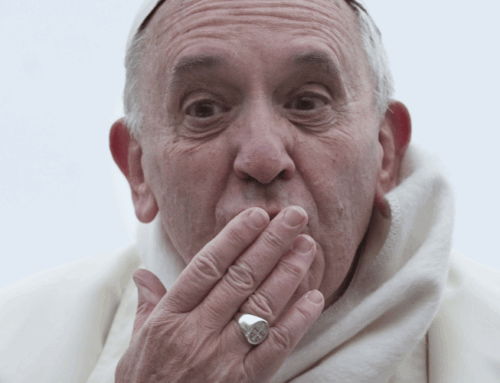Written by: The Catholic Leader, April 13 2016
What is God’s plan for the family, how does the Church support couples in crisis, and what should be the role of priests regarding failing marriages? Archbishop Mark Coleridge has answered 10 questions about the apostolic exhortation, “Amoris Laetitia” (“The Joy of Love”).
- Pope Francis writes eloquently about how forming a family means being part of God’s dream, joining him in building a world ìwhere no one will feel alone.î (AL 320) Concretely, what is the family he envisages?
He doesn’t envisage any idealised family.
The most striking thing about this whole document is its sense of realism from first page to last.
He is very keen to say there is no one size fits all, that there are vast varieties of marriages and families. He says I’m not providing a vast pastoral plan to be implemented around the planet, nor am I, he says, trying to answer answers to all the complex questions about the family.
He is trying and succeeding to get in touch with the great variety of marriages and families in particular, and on the understanding that many of them are, in fact, messy.
This is a pastoral document. He says “we need a heavy dose of self-criticism, and he’s quite prepared to say the Church has not always got this right”. (reference to pars 35, 36, 37)
He’s trying to address the realities of the families in the plural. - Pope Francis talks about the family as multi-generational, not just nuclear. Is he casting the net of family more widely, more inclusively?
He does. And he speaks about society as a kind of family and speaks about the Church as a family of families. In a sense, the Pope’s vision begins in the depths of the Trinity, the communion of love that is God, and also ends there.
One of the reasons the nuclear family is so often in strife is precisely because of the fragmentation between the nuclear family, the extended family, society as a family, the Church as a family, and God. - This is a document written by a pope who is very realistic and pastoral-oriented. He writes about marriage as a journey. Practically how do we apply this?
I think one of the most important contributions of the document is the way it moves from a static view of the family to a dynamic sense of marriage and the family as essentially not a state so much as a journey.
Every person is at a different stage of the journey and the Church has to journey with people, particularly those in strife; not just speak the truth and walk away. But speak the truth and walk with them.
When you walk with people you’ve got to listen to them, particularly people who are on the journey but a long way from home, and therefore struggling. Listen to them, and we haven’t always done that. Once you listen to them you are in a position to discern where they are on the journey, the truth of their own journey, and at the heart of that discerning where is God, perhaps in the midst of all the mess.
Because God isn’t just the point of the arrival waiting for the successful at the end of the journey. The Pope says God is the companion on the way. The Church’s pastoral task is to help people see where God is, even in the midst of the mess as they move along the path.
The document is a summons to the Church to find new words and images to speak about the family, because people don’t understand us. We might understand ourselves and think it is wonderful, but most people now don’t understand what we are saying and they don’t share our assumptions.
So in order to communicate, which is at the heart of evangelisation, we need new words and images of a kind that Pope Francis can come up with. And the Bible will be a unique resource in finding new words and images in communicating what we have to say. - Pope Francis describes the light and dark sides of marriage and the family in our modern world. He says families need nurturing and shouldnít be isolated or walk alone – for instance the need in marriage of the right formation. How is this going to be achieved?
It has implications for what we do in schools, particularly secondary schools – the catechesis of teaching young people to love and the document is full of practical wisdom on that level.
And then beyond school we have to be far more focused and systematic and committed how we prepare couples for marriage.
It has to be like an RCIA (Rite of Christian Initiation for Adults), there has to be a process, not just a couple of token sessions.
So we have to think about what it means for marriage preparation in the diocese.
Again, marriage being a journey, how do we accompany couples in those quite challenging early years of married life?
And then, at each stage of the journey, how do we accompany them until death, when the journey ends. And people are having to be married for a lot longer these days than they used to, because they are living longer. This provokes all kinds of questions about practical responses.
How do we in real terms prepare and accompany married couples, how do we listen to their story, particularly those who are in difficulty, and how do we help them discern the truth of their own journey, and where God is in the midst of their life as a spouse and in the family? He makes it clear rightly prepared married couples have a ministry in these areas – to be companions on the journey for other couples and families. - Would this be an opportunity for those married couples, to step forward, identify themselves, and be used along the journey?
Yes, or be called, because sometimes people don’t think they have the gift, but we might tap them on the shoulder and ask them if they would be prepared to serve in this particular way.
The document is a summons to a pastoral creativity and even at times to a pastoral conversion.
It should not be just the clergy, it has to be the whole Church community, and perhaps in particular experienced and gifted couples.
Walking in faith: A couple attend a prayer vigil for the Synod of Bishops on the family in St Peter’s Square. Pope Francis’ post-synodal apostolic exhortation on the family, Amoris Laetitia (The Joy of Love), was released on April 8. The exhortation is the concluding document of the 2014 and 2015 synods of bishops on the family. Photo: CNS - The Pope is expected to call on priests to accompany Catholics who fall afoul of Church rules, as opposed to criticising them. Is this a radical approach? Practically how could this happen in the archdiocese?
It is radical. What the Pope does not want us to do is to take the truths of the Church and turn them into stones that we hurl at people, who we want to condemn.
We have a truth to speak, but if all we do is speak the truth and don’t accompany people the danger is we will occupy some ethereal world and not touch down in people’s lives.
One of the difficulties, and the Pope acknowledges this, is that a lot of the people who might be in “irregular” situations, they are very far indeed from the Church and the last thing they want is for the Church to accompany them.
They have broken the bond with the Church. They don’t want the Church. Now, at that point the Pope says we need to be more missionary.
How do we go out to those who will not come to us, and may even be alienated from us? Or aggressive towards us? How might we reach out in fresh and creative ways – humble and human – to those who are not journeying with us? - What about families, marriages in crisis? What does AL have to say about the hidden destructive forces affecting families – domestic violence, gambling, pornography?
There is a very acute analysis of the dark forces that can undermine marriages and families. There is also a vision of hope, that says much more is possible.






